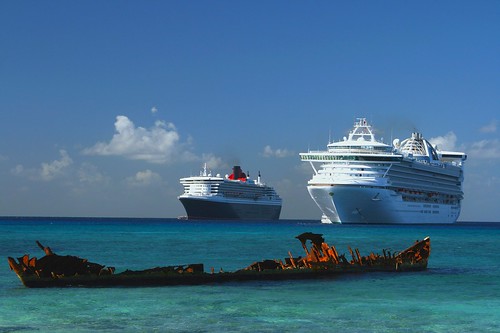Table Of Content
- Check out this video on YouTube on how fast cruise ships go:
- How Does Size Affect Speed and Fuel Consumption?
- Cruise News Recap: Carnival Hike, Overbooking, Stranded Passengers
- How Fast Do Carnival Cruise Ships go?
- How do cruise ships handle emergency situations while at sea?
- Why Cruise Ships Don’t Always Sail This Fast

If the ship is sailing into a headwind, it needs to use more fuel and engine power to maintain speed. If there’s a driving tailwind, the captain may choose to reduce the engine power to avoid arriving at the next port too early. Thunderstorms and rough seas can appear out of nowhere, especially in tropical locales. Hurricane season can also have an impact on cruise ship speed and travel itineraries. A cruise ship may need to speed up, slow down, or adjust its course to avoid severe weather.
Check out this video on YouTube on how fast cruise ships go:
Cruising speed is not the highest speed a boat can reach, but a rate that provides a smooth, comfortable ride and saves fuel. Therefore, if you’ve even worried about a cruise ship hightailing it over rough water to make it to a port on time, have no fear. Cruise ships aren’t meant to fly through the sea, but instead, function to enhance the comfort of its passengers while also improving fuel efficiency. Even though cruise ships are immense in size, it’s amazing how fast they can travel.
How Does Size Affect Speed and Fuel Consumption?
My website, powered by Cruiseline.com, offers a comment section where readers can leave their thoughts and questions. The website saves the commenter’s name, email, and website for the next time they comment. To ensure a personalized experience, I make it a point to respond to as many comments as possible.
Cruise News Recap: Carnival Hike, Overbooking, Stranded Passengers
Usually, the diesel fuel that they use for locomotion is a lower grade than what goes into roadworthy diesel vehicles. The lower efficiency means there’s more polluting exhaust, too. Although less common than the other factors we discussed, emergencies can and do happen at sea. During your cruise, you’re free to do whatever you like, whenever you like — eat, sleep, swim, and enjoy the amazing amenities. Of course, this doesn’t include the weight of thousands of human passengers and everything they’ve brought with them.
Top 24 Largest Cruise Ships In 2024 - Marine Insight
Top 24 Largest Cruise Ships In 2024.
Posted: Tue, 01 Aug 2023 07:00:00 GMT [source]
To maximize efficiency and reduce expenses, cruise ships often operate at an optimal cruising speed that balances travel time with fuel consumption. This allows for a more economical journey while still ensuring passengers arrive at each destination within the scheduled timeframe. One of the main factors that determine the speed of a cruise ship is the power of its engines. Cruise ships are powered by diesel reciprocating engines, which supply the necessary power to turn the propeller shafts that propel the ship through the water.
The weather plays a major role in how fast a ship could travel, just like how an airplane's top speed can depend on how strong of a tail or headwind it encounters. Meet Sophia Mitchell, a passionate traveler and cruise enthusiast. Air Force as an Arabic linguist, Sophia now explores the world as a freelance writer.
Why Cruise Ships Don’t Always Sail This Fast
She funds her four-year (and counting!) cruise adventure using points and miles. Sophia’s travel expertise comes from her time as a reporter for The Points Guy, featured in Forbes, Business Insider, and The Balance. When not traveling, she enjoys relaxing in Priority Pass lounges with tea and battling slow Wi-Fi. Join her as she shares cruise insights and explores the world, one voyage at a time.
How is cruise ship speed measured, and how fast is a knot in miles per hour?
It’s difficult to determine an average distance traveled on a full tank of fuel due to these variables. Cruise ships typically travel at an average speed of 18 to 22 knots, which is equivalent to 20 to 25 mph. However, the maximum top speed of a cruise ship can reach up to 25 knots. As a cruise enthusiast, I’ve always been curious about the speed of these massive vessels and how they can cover such vast distances in a day. So, I decided to delve deeper into the facts and figures surrounding the speed of cruise ships and the factors that can influence their velocity.
The largest ships in the world are Royal Caribbean’s Oasis class. For reference, the roof the Empire State Building is 1,250 feet from the ground. "The real objective is to go 18 or 19 knots much more efficiently, (and) the thing that makes it able to do that also makes it faster." It might not be operational, but its previous accolades make it the fastest passenger vessel currently afloat.
There are also a number of factors that impact travel speed, but we’ll get to that in a moment. A cruise ship can typically reach a speed of around 30 knots, about two to three knots higher than its cruising speed, but it’s not likely to go that fast. Cruise ships rarely hit top speed and will usually only do so if necessary. However, it’s important to note that the Queen Mary 2 is an ocean liner carrying passengers across the Atlantic, not necessarily a cruise ship.
This range allows for optimal fuel efficiency and passenger comfort, ensuring a smooth and enjoyable voyage. The average speed of a cruise ship is typically around 18 to 22 knots, which translates to about 20 to 25 miles per hour. This speed allows for a smooth and enjoyable sailing experience for passengers.

Cruise ship captains earn an average annual salary of $54,541, with top earners making $79,500 per year. You are on vacation and do not want the ship to be moving so fast it becomes annoyingly noticeable! Those who are prone to motion sickness would not appreciate that. I worked as an officer in the deck department on various types of vessels, including oil and chemical tankers, LPG carriers, and even reefer and TSHD in the early years. Currently employed as Marine Surveyor carrying cargo, draft, bunker, and warranty survey.
Many people consider the fastest cruise ship to be Cunard’s Queen Mary 2, which has a top speed of 30 knots. But, the Queen Mary 2 isn’t actually a cruise ship – it’s an ocean liner. Royal Caribbean says its cruise ships go as fast as 18 to 20 knots, depending on the specific ship and itinerary travelled. So while the thought of sailing on the fastest cruise ship in the world may be exciting, cruising is more about relaxation, leisure, and exploration.
Contrary to popular belief, cruise ships do not go faster at night. Cruise ship speed typically has an average cruising speed between 20 and 25 knots (23-29 mph or km/h). Some of the fastest cruise ships, like the Queen Mary 2, can reach speeds of up to 30 knots (34.5 mph or 55.5 km/h). It’s important to note that these speeds are not constant, as they can fluctuate depending on the factors mentioned above. Well, if we stick to the average cruising speed of about 20 knots, which is roughly equivalent to 23 miles per hour, cruise ships go about 550 nautical miles in 24 hours.
Alright, my fellow cruise ship enthusiasts, let’s wrap this up. So, the need for speed on the high seas isn’t just about getting you to the buffet faster. Rather, it’s a delicate ballet of factors, from hull design to ocean currents, and even those legal regulations. Now, let’s take a futuristic glimpse at the world of cruise ship speeds. With new technological advancements popping up faster than the bubbles in your average cruise ship with champagne, the horizon of cruising speed is set for a shakeup.
As a result, they consume more fuel compared to smaller craft. A typical yacht consumes less than 2 gallons per hour whereas a super yacht can burn upwards of 5 gallons per hour. It should be noted though that even small yachts can still consume several hundred pounds of gas every single month. Knots are preferred in sea and air navigation as they align with Earth’s latitude, making them more practical for long-distance travel where Earth’s curvature matters.

No comments:
Post a Comment